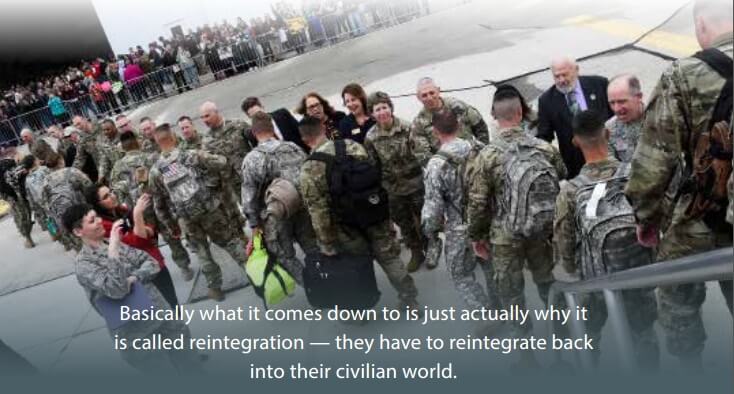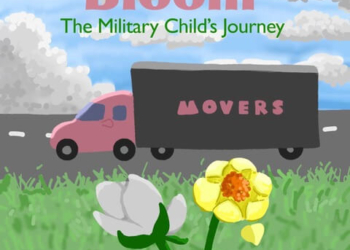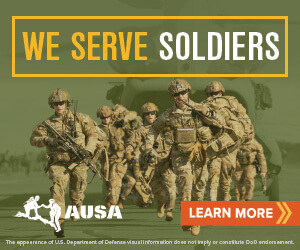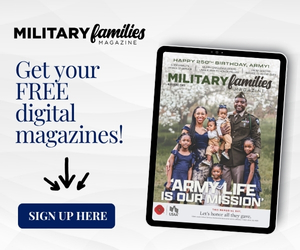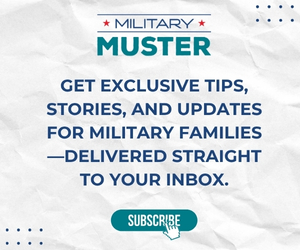The return after a deployment is one of the most highly anticipated moments for any service member. Reintegration is the period attached to homecoming when military personnel transition back into life on the home front.
It is a given that this timeframe is an exciting one, but once the pomp and circumstance fades, issues may arise. These challenges can be common, or there may be some areas that require extra attention. The unique nature of sending the military to diverse locations, then bringing them back to their everyday lives led the Department of Defense and supporting organizations to devise programs that can complement this stage.
Programs to Help Those Coming and Going
It is no secret that the demands on the service branches have amplified since 9/11, leading to more frequent deployments, shorter dwell times, and increasing strains on military households. Specifically, the National Guard and Reserve Component have had a bigger role overseas in addition to their domestic responsibilities. It is easy to think that you and your family will ease right back into a routine, but experts warn that challenges can come at any time — even long after your reunion.
The Wisconsin National Guard, as an example, mobilizes for state and federal activations. From snowstorms to tornado response, to any global contingency operation, the unit’s personnel are often spread over various geographic locations. Recently, they welcomed home members of the 32nd Military Police Company from a 9-month deployment to U.S. Naval Station Guantanamo Bay, while two other contingencies just deployed to the Middle East and Southwest Asia. They rely on the phases of the Yellow Ribbon Program — a program that assists agencies in providing service members and family members with information throughout a mobilization, and external resources to establish and strengthen readiness at home.
“I think basically what it comes down to is just actually why it is called reintegration — they have to reintegrate back into their civilian world,” Vicki Cushman Edgren, Badger Yellow Ribbon Director for the WING, said. “Many of them that go on the Title 10’s [orders] overseas are leaving a civilian job and that traditionally is why Yellow Ribbon was stood up is because more Guard members were being called and they didn’t come back to an active duty base. They came back to a unit in the Guard and then were dispersed back into the civilian population.”
Edgren says that a common trend she sees when Guardsmen return is a lack of knowledge about the many earned benefits they are eligible for after a deployment.
“ … There are a lot of different organizations out there that try to get information out to the service members, so it can be a kind of confusing situation,” she said. “So, that’s one of the key things – is not only to let the service member know what their benefits are, but to let families know what the service member’s benefits are so they can make sure they tap into any kind of resource, whether it be anything from financial all the way to having some kind of combat stress-related concerns from coming back, and then where to go, who to talk to. We try to help them by being a one-stop shop call to us and we’ll resource you out to the correct agencies.”
Employment After Deployment

Lt. Col. Peter Kitzhaber, Chief of the Wisconsin National Guard’s Service Member Support Division, says frequent issues seen from returning service members center on relationships, finances, and jobs. After deactivation, finding employment or returning to a civilian workplace can create an additional stressor.
“On the employment side, we’ve got the underemployed soldiers and airmen, and then in some cases, you don’t really realize is they’re overemployed, where maybe they got three or four different jobs they’re working all those hours to make ends meet,” he said. “It’s not that these are widespread issues, but this is where we focus our efforts to make sure they’re aware of the programs.”
Below are agencies that have programs designed to assist Guardsmen and Reservists with civilian employment:
Employer Support of Guard and Reserve (ESGR): works with employers to create supportive work environments for citizen soldiers so that they can do their job overseas and return to meaningful employment http://www.esgr.mil/.
National Guard Employment Network (NGEN): developed by a nonprofit organization, this program assists Guardsmen in resumes, mock interviews, and professional development, along with connecting them to a network of employers with job openings . org/JobSeekers/HowCASYWorksNG. html
Wisconsin Employment Resource Connection (WERC*): an employment partnership program that provides relevant workforce training and job-placement assistance to anyone who has served in the Wisconsin National Guard http://wisconsinmilitary.org/.
* Although the WERC program is specific to Wisconsin, other states may have their own version of the program. Each state’s military affairs program can provide details on what is offered at your location.
Finding Support That Suits Your Needs
In addition to navigating benefits and finding employment, service members or families may face other challenges, such as adjusting their relationships to changes that come with separation. Military OneSource offers confidential, non-medical counseling options to connect with a professional, on your terms, in a manner that best works for you.
Senior program analyst Jena Moore works with the Military Community & Family Policy non-medical counseling program office. They offer counseling in-person, over the phone, and live chats. She says there are two reasons people most often contact them during the return and reunion phase.
“What we have seen, or what we find through both of our nonmedical counseling programs, of Military OneSource and the Military and Family Life Counseling (MFLC) program … we find that there’s a variety of reasons people seek counseling, but the things that pop for us specific with the reintegration is the communication and relationship,” Moore said. “Those are reasons that we see that service members and family members, as well as coming together as a couple or a family seek counseling through our programs.”
Counseling services are available individually, as a couple, or for a family. To get started, visit: http://www. militaryonesource.mil/confidentialhelp, or call 800-342-9647.
Additional no-cost counseling is also offered by Give An Hour – a nonprofit organization that connects volunteer mental health professionals to veterans and their families. To search for providers, visit https://www. giveanhour.org/.
For commanders seeking assistance in identifying members of their unit who may be facing additional challenges during reintegration, check out R2UI program (Ready and Resilient Unit Integration). It is a master resilience program that aims to train unit leaders to help recognize at-risk Soldiers within their own formations: https://www.army.mil/ readyandresilient/.


